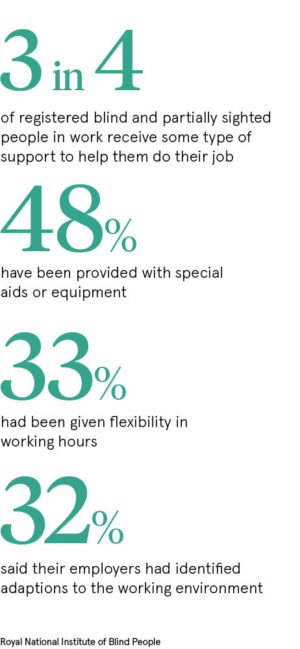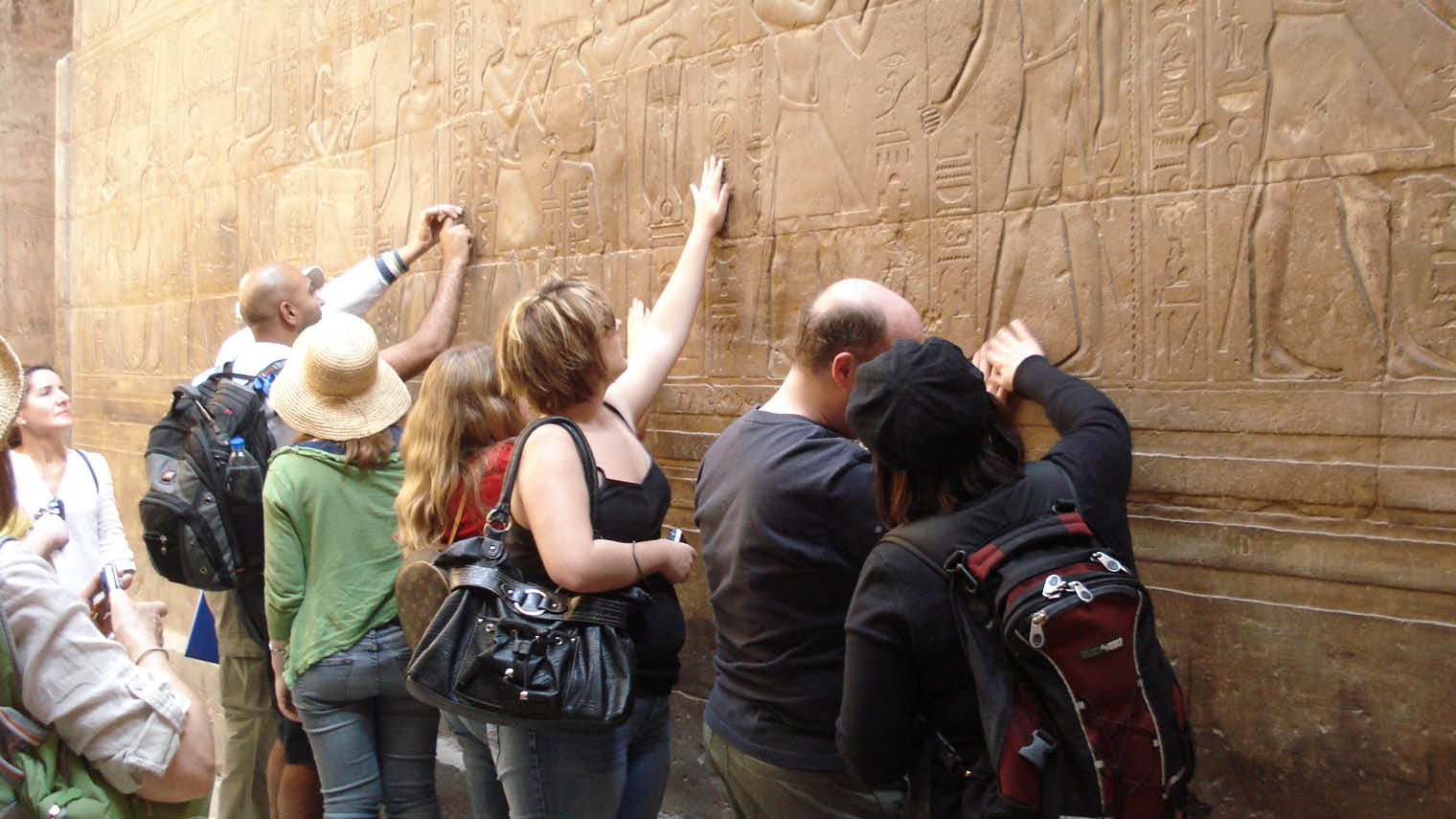When it comes to life expectancy we’re reaching ages that our ancestors could only ever dream of – with over 85s becoming the fastest growing age group in the UK. But extra time on the planet is taking a toll on our bodies and, particularly, our eyes.
The world’s ageing population means that the number of people with low vision is expected to double over the next 20 to 30 years, predicts the International Agency for the Prevention of Blindness (IAPB).
According to Royal National Institute of Blind People (RNIB), there are more than two million people in the UK living with sight loss severe enough to have a significant impact on their daily lives, such as not being able to drive. Those figures are predicted to rise to more than 2.7 million by 2030 and nearly four million by 2050.

How low vision can impact a person’s life
Low vision not only affects a person’s independence but has significant psychosocial and economic impacts, says the IAPB. These can include access to education and employment, higher risk of falls, difficulties with daily living and increased dependence.
“For patients, the hardest thing is no longer being able to drive – followed by watching TV, reading, shopping and using public transport,” says Maria Pikulski-Hughes, eye clinic liaison officer at St Helens Hospital, Merseyside.
Different conditions can have hugely varying impacts on vision, explains Dr Louise Gow, specialist lead in eye health for RNIB. “Macular degeneration, for example, affects central vision – so you have difficulty recognising faces or reading a food label. However, glaucoma affects peripheral vision – you can still recognise faces and read medicine packets but you might have trouble spotting a bus approaching from your left or right.
“Sight loss due to eye disease related to diabetes can affect both central and peripheral vision – with an even greater impact on quality of life. Usually, it’s what the person used to do for leisure that is impacted the most – so driving, reading, seeing grandchildren and painting,” she says.
“But there are solutions and a dispensing optician or low vision practitioner would look at how to help them continue doing these things. Advances in technology mean we have devices that you can use to switch your heating on and off without fiddling with buttons, or voice-recognition gadgets to access information.”
It is easier today than ever before to live with low vision
Ms Pikulski-Hughes agrees that being positive is the way forward. “It’s the sense we dread losing – but there is life after sight loss,” she says. “You learn to adapt and cope with what you have. When it comes to shopping, most supermarkets and big stores now offer an assisted shopping service. You just simply have to say: ‘Can I have an assisted shop, please?’ Smaller shops are even more helpful and happy to provide a personal touch. For example, staff in card shops will describe the picture and read out the verse to help you choose.”
She adds: “Public transport is also easier these days for those with low vision. Operators like Virgin organise assistance whereby someone will meet you at the station and help you to your seat, fetch refreshments from the on-board shop and help you onto the platform at the other end. And if you explain to a bus driver that you have low vision they should make allowances – like letting you sit down before pulling away.”
When it comes to letters and statements you have the right to ask for these to be sent in your preferred format, says Dr Gow. “So, for example, you could ask for big print, audio or braille. Those things can make life so much easier.”
Improvements are also being made in the world of finance with new measures including apps, talking cash machines used via a headset, high-contrast screens, raised dots on keypad buttons, modified plastic cards and in-branch accessibility with better lighting and layout.

Traveleyes travellers feeling hieroglyphs on the Karnak Temple Complex, Egypt
Helping public places become more accessible
Charities like The Beacon Centre in Wolverhampton also work with businesses, shopping centres, housing associations and even theatres to train staff to become sight-friendly.
“We show teams how to guide people with a visual impairment and also use simulation glasses to give an idea of what it’s like to live with different eye conditions,” says the charity’s Helen Brown.
“All workplaces can become more sight-friendly with just a few simple changes. One of the first things we advise is for companies to look at the font size they use. Just switching to a size 14 font or above can make a massive difference to those with sight issues and prevent others from squinting at the screen. We tell people to think about colour contrast as well, black writing on a blue background might look great but it’s not sight friendly.
“And where there are employees with sight loss we also advise that staff announce themselves when they enter or leave a room and maintain a tidy workplace. A box on the floor might be visible to most people but it can cause a trip hazard for others.”
It’s the sense we dread losing – but there is life after sight loss. You learn to adapt and cope with what you have
Helping those with low vision see the world
The Access to Work scheme, run byJobcentre Plus, provides advice, support and grants for equipment that may help in the workplace, such as voice-recognition software.
Improvements are even being made in the holiday and leisure industry. Traveleyes, a commercial tour operator which takes blind and sighted travellers around the world together, is the brainchild of entrepreneur Amar Latif who had lost 95 per cent of his vision by the age of 18.
“No travel company would accommodate an independent blind traveller,” he says. He launched Traveleyes to make the world more accessible for blind and visually impaired travellers. Sighted travellers, who get a 50 per cent discount on their trip, help guide and describe sights to travellers with visual impairments.
“Not only do we receive great feedback from our blind travellers, but sighted people love our trips too,” he says. “They often comment on how they take in more surroundings as they describe the sights and explore the destination with their other senses. Travel is more than just the seeing of sights, and when you start looking with your other senses, the world becomes more alive.”

How low vision can impact a person's life
It is easier today than ever before to live with low vision

